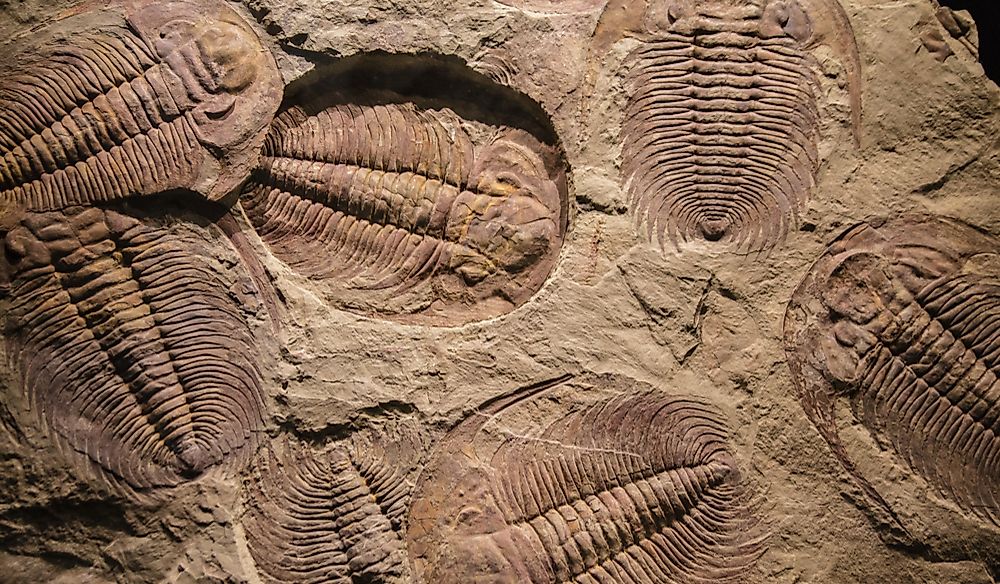How Are Fossils Formed?

A fossil is the preserved remains, trace, or impression of an organism from a previous geological age that is solidified in rock. Fossils can include shells, bones, exoskeletons, rock imprints, hair, oil, petrified wood, DNA remnants, feathers, and coal. Fossils vary in size from incredibly small to extremely large. Microfossils can only be seen using a microscope, such as pollen and bacteria, while macrofossils can be many meters tall and weigh several tones, such as the remains of dinosaur bones and petrified trees. Fossils can be formed in various ways depending on external conditions and an organism's tissue type.
Fossilization Processes
Fossilization begins when an organism dies and is quickly covered or buried by sediments. This often occurs near a body of water, such as a river, lake, or ocean. The layers of sediments protect the remains from forces of decay, such as bacteria and weathering. However, sediments do not adequately protect the remains but slow the decomposition process. Over time, the fleshy parts of the organism decompose, leaving hard materials such as shells, bones, and teeth.
After thousands of years, the remains eventually turn into hard solid rocks. Sometimes water percolates through the rock and washes the remains away, but since the rock above is rigid and hard, it does not crumble into the empty space but forms a natural mold of the organism.
Fossils can also form when water carries mineral into the mold where it hardens, and forms are natural cast of the organism. Although the original matter is washed away, the cast creates a near exact reproduction of the animal or plant. Soft body organisms such as mosquitoes, flies, and ants are rarely fossilized in this manner but can be fossilized in sticky resin.
Types of Fossils
Fossils include actual remains of ancient life that are either frozen in polar permafrost or glaciers, or dry remains found in salt beds and caves. They can also be preserved over long periods inside amber or dense layers of clay.
Mineralized organisms or body fossils, such as petrified wood and dinosaur bones, are common types of fossils.
Ichnofossils or trace fossils include tracks, burrows, nests, or fecal matter. Trace fossils do not prove the existence of an organism but show the behavior of an organism that is thought to have existed.
Chemofossils or chemical fossils are proteins or organic compounds found in rocks and include coal, petroleum, and most fossil fuels.
How Old Are Fossils?
Not all remains are fossils. Paleontologists agree that remnants can only qualify as fossils if they are at least ten thousand years old. The most recent fossils come from organisms that were declared extinct in the past 20,000 years, such as the woolly mammoth, while the oldest known fossils are marine algae that date back between 3.48 and 4.1 billion years.
Notable Fossil Sites
Mistaken Point, a UNESCO World Heritage Site in Newfoundland and Labrador is known for containing Ediacaran fossils representing the oldest multicellular life on Earth.
The Mississippi Petrified Forest contains forests formed over 30 million years ago before being washed downstream and petrified.
Joggins Fossil Cliffs, a UNESCO World Heritage Site in Nova Scotia, Canada is famous for its fossil collection, which represents life in a rainforest ecosystem from approximately 310 million years ago.











